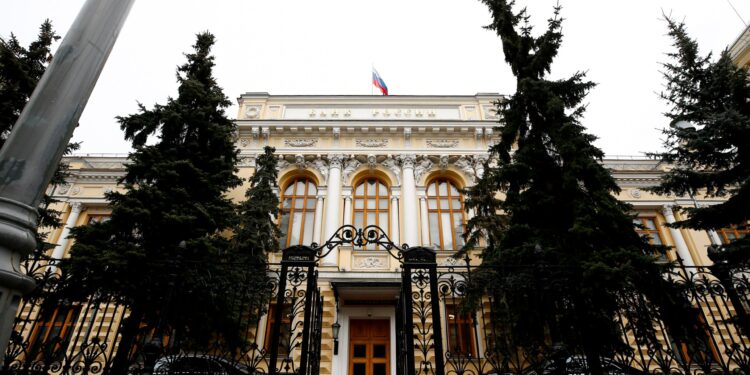Russia’s central bank raised its key interest rate to a record 21% from 19%, in an attempt to combat inflation fueled by military spending. Thus, the key interest rate has risen to a new historical peak, within the framework of combating the “overheating economy” and inflation in the country.
The decision aims to reduce growing inflation in light of the pressure of huge government spending – especially in the military sector amid the fighting in Ukraine – on the economy’s ability to produce goods and services and increase workers’ wages.
Economy growth
The central bank said in a statement, “Growth in domestic demand still significantly exceeds the ability to increase the supply of goods and services,” adding that inflation is “significantly higher than the central bank’s expectations last July… and inflation expectations are still rising.” .
The bank rejected the possibility of increasing interest rates further next December.
The Russian economy is still showing growth as a result of continued oil export revenues and government spending on goods, including military spending, which increased inflation, which the central bank tried to combat by increasing interest rates, which increases the cost of borrowing and spending on goods, and this reduces pressure on prices in theory.
The Russian economy grew by 4.4% in the second quarter, while the unemployment rate fell to 2.4%, and work is underway at full speed in factories that in many cases produce materials that can be used by the army, such as vehicles and clothing.
In other cases, local producers fill gaps caused by a lack of imports from abroad due to sanctions or decisions of foreign companies to stop working in Russia.
The Russian Central Bank kept its economic growth expectations in Russia for the current year in the range of 3.5% to 4%, and for the years 2025, 2026, and 2027, between 0.5% and 1.5%, 1% to 2%, and 1.5% to 2.5%, respectively.
It also raised its inflation expectations in 2024 to between 8% and 8.5% from 6.5% to 7%, and raised its inflation expectations for next year to between 4.5% and 5%.
For its part, the International Monetary Fund reduced its expectations in its latest report a few days ago for growth in the Russian economy for the year 2025 from 1.5% to 1.3%.
Purchasing Managers’ Index (PMI) data issued by Standard & Poor’s Global also showed that the Russian manufacturing sector recorded a contraction in September 2024 for the first time since April 2022.
Future prospects
Bloomberg Economics analysts indicate that growth driven by increased military spending has exceeded its peak, and indicators of economic activity have shown that industrial production has become stable due to pressures on production capabilities, which has led to a slowdown in growth in sectors not related to military demand.
“Manufacturing growth has slowed recently, suggesting that constraints on production capacity are starting to take a toll,” Tatiana Orlova, an economist at Oxford Economics, told Bloomberg.
She added that increased investment is necessary to maintain growth, but this is “unlikely given the high levels of interest rates.”
While Anders Olofgaard, associate professor at the Stockholm Institute for Transitional Economics, said, “Russia’s growth prospects were already bleak before the all-out invasion, and now they look even bleaker.”



